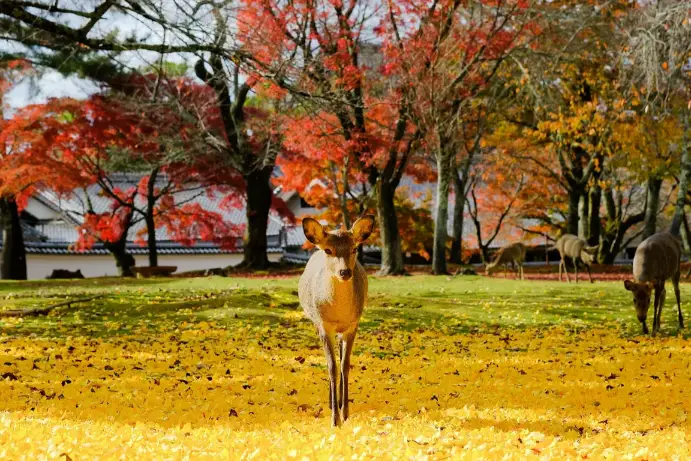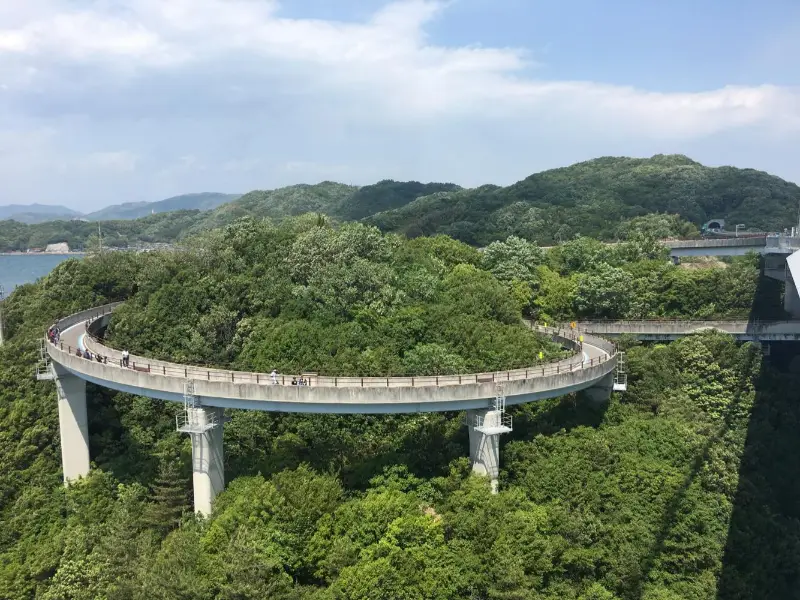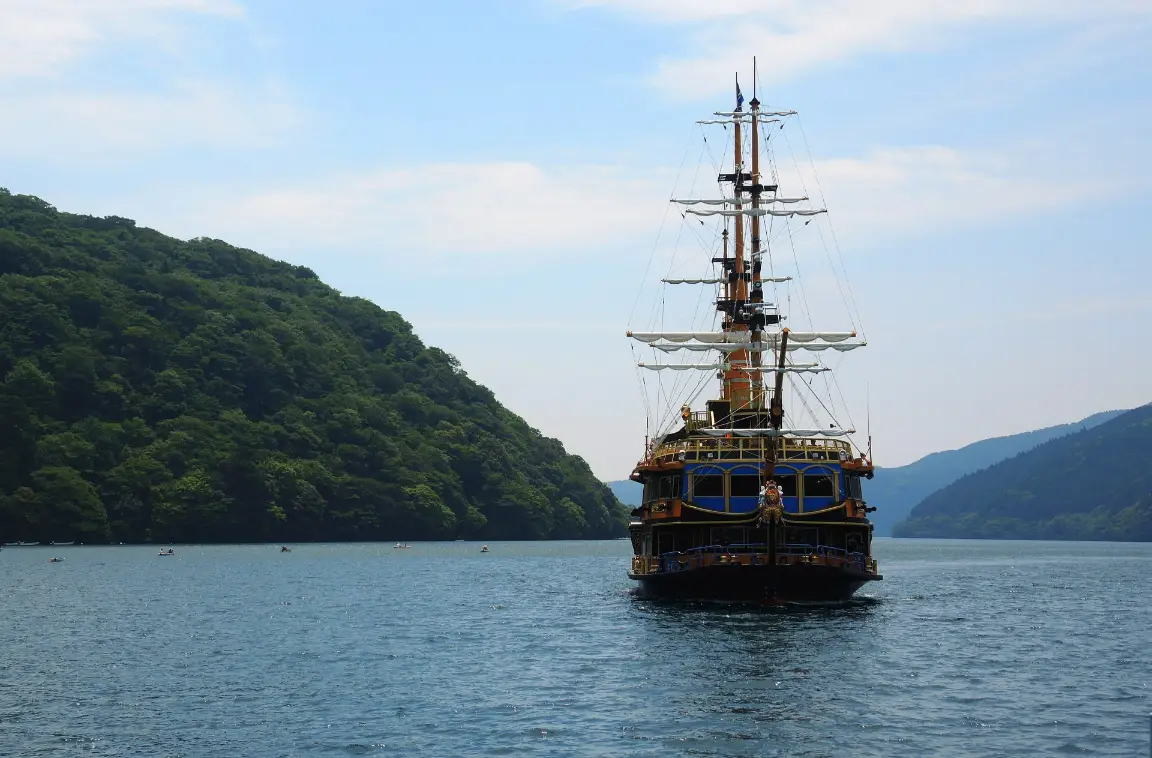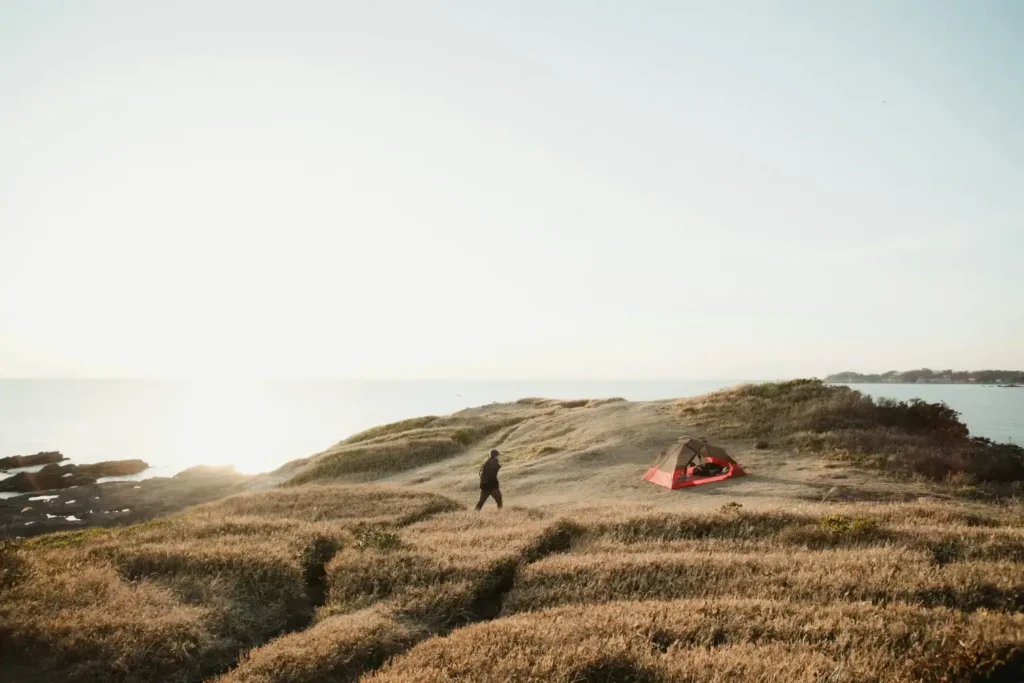For outdoor adventures in Japan is a refuge where calm natural beauty meets exhilarating thrills. From peaceful walks in bamboo woods to heart-stopping paragliding over Mount Fuji, Japan’s varied terrain presents countless adventure lovers’ dream comebacks. Every part of Japan offers an attractive, fresh approach to interacting with nature, whether your interests are in hiking the tough Japanese Alps or exploring the vivid coral reefs off Okinawa.
Being the top adventure tourism in Japan, the nation offers something for anyone. There are lots of low-key activities for people wishing to experience adventure time in Japan in a more laid-back manner, including riding across gorgeous countryside or bathing in an outdoor Onsen surrounded by breathtaking scenery. From canyoning down waterfalls to snowboarding on Hokkaido’s snowy slopes, thrill-seekers have equally plenty of choices.
Showcasing the finest experiences from mild to wild, this article is the complete guide of outdoor adventures in Japan. Come explore the vast array of adventure sports Japan has to offer with us; we will provide you with ideas, insights, and all you need to organize your next amazing outdoor trip.
Moderate Outdoor Adventures In Japan
- Hiking Trails and Scenic Nature Walks
Japan presents several gentle and easy hiking paths ideal for novices and families; its natural beauty is best seen on foot. One of the most famous locations is Kyoto’s Arashiyama Bamboo Grove, where one may meander among tall bamboo stalks softly swinging in the breeze. Nara Park provides a calm environment where you may stroll among friendly, wandering deer and visit historic temples in order to have a more cultural experience. Slightly outside Tokyo, Mt. Takao is another fantastic choice. For those who would choose a less demanding path, this easily reachable mountain boasts cable cars, well-kept paths, and breathtaking vistas.
The Japanese Alps trekking paths provide amazing views without demanding advanced hiking ability for those seeking a moderate but fulfilling hiking experience. For beginners, trails like the Kamikochi Valley route are doable and offer a breathtaking backdrop of towering mountains.
The cherry blossom season in spring or the vivid fall foliage makes the ideal occasions to savor these natural treks and hikes. Wearing comfortable shoes, packing water, and researching the complexity of the trail ahead can help to guarantee a seamless encounter. For those unfamiliar with the locations, many of the well-marked trails in Japan are beginner-friendly, and most can be accessed by public transportation, which increases their attraction.

- Cycling in the Rural Environment
Riding over the countryside is a great slow approach to savoring adventure time in Japan. The Shimanami Kaido, a 70-kilometer-long road and bridge system linking Shikoku with Japan’s principal island, Honshu, is among the most often used paths. Along with chances to visit small islands and beach towns along the way, this cycling path presents breathtaking vistas of the Seto Inland Sea. For children and casual riders, Kyoto’s Philosopher’s Path—a shorter, picturesque trail winding alongside a cherry tree-lined canal—is another excellent path.
For individuals who want moderate exercise that lets them explore rural settings of Japan at their own speed, cycling is a great choice. The trip will be just as fulfilling as the destination along these paths since you will come across lovely nature, historic temples, and little towns.
Checking local rental stores close to the bicycle paths is advised when hiring bikes; many of them have a range of bike alternatives, including electric-assist models for a simpler ride. Riding a bike in Japan comes with safety advice, including adhering to the left side of the road, observing traffic signals, and donning a helmet. Particularly for longer rides like the Shimanami Kaido, carrying water, a map, and light food is also smart.

- Onsen, Hot Springs Experience
Soaking in onsen (hot spring) surrounded by breathtaking natural surroundings is one of the most laid-back outdoor adventures in Japan. Renowned for its hot springs and breathtaking mountain vistas, Hakone, which lies close to Tokyo, provides the ideal haven for people looking for peace. Another hot spring paradise on the island of Kyushu is Beppu, well-known for its range of hot springs—mud baths and steam sand baths, among other things.
Because the mineral-rich waters of onsen are known to ease muscle pain, boost circulation, and encourage relaxation, soaking in an onsen not only relaxes but also has health advantages. Most outdoor onsens are located in natural surroundings so that bathers may relax in warm, therapeutic waters and appreciate the mountains, forests, or even the Sea of Japan.
Respecting onsen etiquette, which is a fundamental aspect of Japanese culture, will help one to really appreciate the onsen experience. Visitors have to wash and rinse completely at the shower stations given before entering the bath. Since bathing is done naked, swimwear is not permitted; instead, it is traditional to pack a tiny towel for modesty into the bathing area. For other bathers as well as for yourself, keeping quiet and conscious behavior will improve the onsen experience.
- Camping and Glamping
Camping is an excellent way to really experience Japan’s beautiful countryside. Famous locations like the Fuji Five Lakes area have fantastic views of Mt. Fuji, which would be ideal for a calm camping trip. Nature enthusiasts would find the Hokkaido National Parks perfect for individuals ready to venture farther north since they feature immaculate forests, glistening clean lakes, and many animals.
Glamping, or elegant camping, is becoming more and more common in Japan as a more pleasant and opulent experience. Combining the excitement of camping with the conveniences of a hotel stay, sites like the “Hoshinoya Fuji” resort provide totally outfitted tents with comfy mattresses, heating, and meals. Particularly for families or those new to camping, glamping is a beautiful approach to appreciating Japan’s natural beauty without compromising luxury.
Bookings in advance are advised for any camping or glamping trip scheduled in Japan, particularly in the summer and autumn during busy times. Although many Japanese campgrounds offer basic amenities such as bathrooms, showers, and cooking places, if you intend to cook, you still need to pack necessary items, including a sleeping bag, a flashlight, and a portable stove. Additionally, it is essential to look at the weather prediction before your travel since mountainous regions have fast-changing circumstances.
These low-key outdoor activities let you enjoy adventure tourism in Japan at a reasonable pace by providing the ideal mix of nature and leisure. For visitors, adventure tourism in Japan offers a moderate adventure to fit any visitor, whether your preferred activity is camping beneath the stars, riding along seaside routes, swimming in hot springs, or trekking across peaceful woodlands.
Moderate Outdoor Experiences
- Kayaking and Canoeing
Kayaking and canoeing provide an exciting but rather complex approach for individuals wishing to increase their adventure time in Japan to explore the calm rivers and lakes. Renowned for its tranquil waves and spectacular views of Mt. Fuji, Lake Ashi in Hakone is the perfect place for kayaking. Paddling across the lake, you will come across famous sites like the floating torii gate of Hakone Shrine and breathtaking natural beauty. Oirase Gorge in Aomori is another fantastic place where kayakers may negotiate softly flowing rivers among a rich forest canopy and tumbling waterfalls.
For intermediate adventurers looking to mix outdoor exercise with beautiful discovery, kayaking in Japan is perfect. These sites provide a mix of beauty and adventure, regardless of your preferred calm paddling or minor rapids. Most kayak rental stores in these locations offer tools and basic tuition, which makes it accessible even for people with little kayaking knowledge.
Safety must be the first priority when kayaking in the natural settings of Japan. Always carry a life jacket; check the weather ahead of time; let someone know about your plans. Starting on calm waters like Lake Ashi, beginners should advance to increasingly difficult paths gradually. It is advisable to pack a dry bag, sunscreen, and water to safeguard personal items. Kayaking Japan’s rivers offers a different, water-level view of the nation’s natural beauties.

- Snorkeling and Diving
Snorkeling and diving around Okinawa and the Izu Peninsula provide some of the most intriguing marine experiences if you’re interested in underwater adventure tourism in Japan. Especially well-known for its vivid coral reefs and glistening clean waters is Okinawa’s Blue Cave. Under the direction of knowledgeable tour operators, you may snorkel among vibrant fish and view varied aquatic life here. A snorkeling trip from Okinawa Naha offers a fantastic chance to discover secret reefs and sea caverns for a more off-the-beaten-path excursion.
Another great place for snorkelers and divers is the Izu Peninsula, nearer Tokyo. With rocky formations, kelp forests, and a variety of sea life—including turtles and rays—the area presents a fantastic underwater scene. To serve both novice and more experienced divers, many neighborhood dive stores provide equipment rentals and trips.
With the cleanest waters usually found between June and September, late spring to early autumn is the ideal time for snorkeling and diving in Japan. If you are new to these activities, mainly follow the advice of qualified teachers to guarantee a secure and fun experience. To completely capture the vivid underwater world, it is especially advised to pack appropriate tools such as a mask, snorkel, fins, and underwater camera.
- Mountain Trekking
Mountain trekking in Japan offers the ideal moderate-level experience for individuals who enjoy combining the environment with cultural exploration. One such walk is Mt. Koya in Wakayama, which combines traditional pilgrimage paths with calm woodlands and historical shrines. Following the 24-kilometer Koyasan Choishi Michi pathway, which is dotted with stone signs pointing to the holy mountain, hikers can see amazing landscapes and learn about Japan’s spiritual legacy along the route.
Another fantastic place for trekking is the Kamikochi Valley in the Japanese Alps. Offering breathtaking views of the surrounding hills, the well-kept paths meander through verdant forests, under suspension bridges, and along the banks of the Azusa River. Autumn, when vivid foliage blankets the valley, is especially when the region is most sought for.
See other sections of the Japanese Alps, where you’ll discover paths ranging from intermediate to advanced, for a more difficult but worthwhile walk. Whatever path you go upon, preparedness is absolutely vital. Wear strong hiking boots; wear layers; pack basics, including water, food, and a first-aid kit. Ensuring a safe and fun hiking experience also depends on first consulting trail maps and weather forecasts.
- Skiing and Snowboarding
Skiing and snowboarding in Japan will thrill winter sports aficionados for their adventure sports reputation. Some of the top ski resorts in the nation are found on Hokkaido; Niseko is the crown gem. Renowned for its light, fluffy snow, Niseko has a range of hills to suit intermediate skiers and snowboarders. For those just starting out in snow sports in Japan, the resort is conveniently equipped with rental stores, ski schools, and guided backcountry trips.
Another notable winter activity destination is Hakuba Valley in the Japanese Alps. Having more than ten resorts, it offers varied terrain for intermediate and advanced skiers. Attesting to its world-class slopes and infrastructure, the valley hosted various events at the 1998 Winter Olympics.
Usually, with discounts for early bookings, ski passes in these places can be bought for single days or multi-day use. There are plenty of equipment rentals; most stores provide premium tools that fit different degrees of expertise. Ski classes, provided by seasoned experts, are accessible to anyone wishing to improve their abilities.
Especially during peak season (December to February), it is advisable to reserve lodging and passes ahead of a skiing or snowboarding trip in Japan. Always follow resort safety policies and, to prevent injuries, take breaks as necessary. An amazing experience combining thrills with stunning natural beauty is skiing in the powdered snow of Japan.
When planning a skiing or snowboarding trip in Japan, it’s advisable to book accommodations and passes in advance, especially during peak season (December to February). Always follow resort safety guidelines and take breaks as needed to avoid injuries. Skiing in Japan’s powdery snow is an unforgettable experience that combines thrills and breathtaking natural beauty.
Wild Outdoor Adventures In Japan
- Peak Climbing
For adventure sports Japan aficionados, challenging terrain provides some of the best rock climbing opportunities. Mount Mitake and Ogawayama are two of the most often visited sites for climbers. Usually known as “Japan’s Yosemite,” Ogawayama sits in Nagano Prefecture and boasts granite rock faces with paths for all skill levels—from novices to advanced climbers. Among the climbing community, the region is famous because of its breathtaking surroundings—streams and forests, among other things. Near Tokyo, Mt. Mitake is a conveniently located site with several boulder and sport climbing paths drawing year-round climbers.
These climbing sites have routes challenging both beginners and experienced climbers, therefore addressing varying degrees of difficulty. Places like Ogawayama and Mt. Mitake are so well-liked because of the variety of climbing routes available—from vertical cracks to overhangs. Along with testing physical ability and strength, the climbs offer an exciting adventure.
For those eager to rock climb in Japan, packing the necessary tools is absolutely vital. An introductory climbing kit should call for a helmet, climbing shoes, a harness, ropes, carabiners, and a belay device. Safety is first; hence, before beginning your climb, always check your gear and harness twice. If you live in a new location, it’s best to accompany a guide or join a climbing group, as they know the paths and can provide insightful advice on technique and safety. In Japan, rock climbing is about seeing the unvarnished, natural beauty of the nation from breathtaking heights, not only about the physical difficulty.
- White Water Rafting
Whitewater rafting in Japan’s river rapids provides unparalleled excitement for everyone looking for an intense adventure. One of Japan’s best rafting sites, the Kuma River in Kyushu, boasts steep rapids and fast-flowing waves. Among stunning mountainous terrain, this river—one of the three fastest in Japan—offers rafters a heartstopping journey through a sequence of twists, turns, and drops. The Tonegawa River in the Kanto region is another amazing place for rafting; its spectrum of rapids fits both novice and experienced rafters.
Rafting these rivers is the ideal approach to mixing adventure with an amazing natural setting. Surrounded by rich trees and rocky cliffs, you will feel the surge of negotiating whirlpool rapids as you paddle across choppy waves. A dynamic and memorable outdoor experience results from the excitement of conquering each rapid, followed by quiet times as you float across slower parts of the river.
Late spring to early autumn is the ideal time for rafting in Japan, especially between May and October, when the water levels are high enough to generate challenging rapids. Wearing appropriate gear, including a wetsuit, helmet, and life jacket, will help you stay dry and maybe even enable you to plunge into the river during a rafting journey. Most rafting trips include the required equipment and are run under the direction of licensed guides who give safety a top priority, therefore guaranteeing an exciting yet safe
- Paragliding
Paragliding is a must-try sport for everyone seeking an exciting adventure time in Japan, as from a bird’s-eye perspective, the breathtaking scenery there is. Mount Fuji is one of the most famous paragliding locations where enthusiasts may soar far above the famous summit and its environs. Every explorer should have Mt. Fuji on their bucket list since the sense of floating in the heavens is a once-in-a-lifetime. Another well-liked spot is Niseko in Hokkaido, which provides summer tandem paragliding flights over undulating hills, valleys, and large fields of flowers.
Beginning and seasoned paragliders can find paragliding in Japan accessible. Most paragliding centers offer tandem flights, in which participants are tightly tied to an expert instructor handling all facets of flying and navigation. This makes it the perfect excursion even for people without past paragliding knowledge. The sole requirements are to follow the instructor’s safety guidelines and to be in decent physical condition.
Participants are briefed on paragliding’s fundamentals—that is, how to launch, maneuver, and land safely—before flying. To remain warm at higher altitudes, dress comfortably, choose sports shoes, and don a jacket. Apart from providing a secure experience, guided trips enhance the excitement since instructors enable the capture of amazing aerial views with action cameras. Paragliding is an amazing approach to viewing Japan’s natural beauty from a whole fresh angle. It is an unforgettable addition to your travel plans.
- Canyoning
Canyoning in locations like Minakami is very essential for anyone seeking a full-on adventure tourism in Japan experience. Minakami, tucked away in Gunma Prefecture’s highlands, has some of the best canyoning opportunities in the nation where visitors may rappell down waterfalls, slide down naturally occurring water slides, and jump into glistening clean pools. Canyoning is an adrenaline-packed approach to seeing Japan’s unspoiled natural beauty since the excitement of negotiating small gorges created by flowing rivers is unmatched.
With several routes varying in complexity, canyoning in Minakami is appropriate for both novice and experienced travelers. While some courses involve difficult descents down tall waterfalls requiring technical skills, others are relatively straightforward, with simple slides and small jumps. Canyoning offers a mix of exhilaration and wonder regardless of degree as you sink yourself into Japan’s untamed settings.
The first concern in canyoning is safety; hence, participants have life jackets, wetsuits, helmets, and harnesses. Every group has guides that guarantee a safe experience and offer directions on how to tackle challenges. Particularly with regard to leaping or rappelling down steep terrain, you should pay close attention to the recommendations of your guide. You should also include some change of clothing since canyoning is a rough and wet adventure. Canyoning is an excursion that lets you interact with Japan’s outdoors in the most thrilling way imaginable with its mix of excitement and natural discovery.
Unique Outdoor Adventures in Japan
- Car Club Meet-ups at Daikoku, PA
For those who enjoy cars, Daikoku Parking Area (PA) in Yokohama is a special must-see location providing an immersive insight into Japan’s active automotive scene. Daikoku, PA, becomes a car lover’s dream come true every weekend as car groups show off their most prized vehicles. From rare vintages to slick sports cars and painstakingly altered imports, this parking lot draws car aficionados from all throughout Japan. Though they are informal, the meet-ups offer an unmatched chance to view some of the most beautiful vehicles in the nation up close.
Daikoku PA has an electrifying vibe, with the sound of engines roaring and gleaming exteriors shining under neon lights evoking Tokyo Drift. For those who love cars, it’s an opportunity to engage with local car aficionados in addition to seeing Japan’s automotive artistry. Many guests seize the chance to photograph, trade advice, and even participate in impromptu vehicle rides across Yokohama’s roadways. Although language could be a problem, most of these barriers are broken down by global love for vehicles, thereby enabling guests to really enjoy this special cultural experience.
When to Go
The optimum seasons for outdoor adventures in Japan depend on the kind of activity. Because of their moderate temperature and breathtaking natural surroundings—cherry blossoms and fall foliage—spring (March to May) and autumn (September to November) are perfect for hiking, bicycling, and camping. Particularly in Okinawa and Hokkaido, summer—June to August—is ideal for water-based adventures, including kayaking, snorkeling, and canyoning. Especially in Hokkaido and the Japanese Alps, winter—December to February—is the best period for skiing, snowboarding, and snow-based activities.
Crucial Tools and Get-ready
The degree of adventure dictates the gear and clothes needed for outdoor pursuits. Wear cozy, layered clothes and pack the basics, including water, food, and a map, for moderate pursuits like cycling or hiking. Particularly for moderate to extreme excursions like skiing, rock climbing, or canyoning, specific gear, including helmets, wetsuits, climbing shoes, and harnesses, is required. For those who would instead not pack their own gear, most outdoor locations in Japan have gear rental stores. But, especially for sports like rock climbing or snowboarding, carrying your own equipment guarantees the proper fit and familiarity.
Respect for Nature and Safety
Adventure tourism in Japan requires one to respect local rules and environment. Always follow advised directions, stay on designated paths, and refrain from upsetting natural sites or disturbing animals. Safety gear, including life jackets, helmets, and ropes, ought to always be utilized for water-based and high-altitude activities. Furthermore, before starting any outdoor trip, one should check the weather to prevent risky circumstances.
Speaking and Communication
Your outdoor journey will be much enhanced by knowing a few basic Japanese words. In contacts with residents, phrases like “Sumimasen” (Excuse me), “Arigatou” (Thank you), and “Konnichiwa” (Hello) help. If language issues call for you to attend guided tours, think about it. Many advisers can offer insightful analysis and speak English, thereby guaranteeing a safe and enriching experience.
How to Organize Your Outdoor Adventure Trip?
- Selecting the Appropriate Destination
Choosing the ideal location for your outdoor Adventures in Japan will rely on season, hobbies, and degree of expertise. Areas like Arashiyama Bamboo Grove in Kyoto or Nara Park provide easily available nature treks for beginners or those looking for light exercise. If you enjoy intermediate adventure, think about kayaking on Lake Ashi or cycling the Shimanami Kaido for a mix of physical exercise and breathtaking landscape. For experienced thrill-seekers, sites like Mt. Fuji for paragliding or Ogawayama for rock climbing provide an adrenaline surge.
Plans also depend much on seasonality. Because of their pleasant temperature and amazing scenery, spring and autumn are ideal for camping, bicycling, and hiking. While winter provides the best conditions for skiing and snowboarding in areas like Hokkaido and the Japanese Alps, summer is perfect for water sports including snorkeling, canyoning, and rafting. For the most fun experience, choose a location that fits your adventure tastes as well as the season you intend to travel for.
- Booking and Reservation Policies
Ahead of time planning and booking will help your trip in Japan go more smoothly. Regarding lodging, think of reserving traditional inns (ryokans) close to the locations of your selected adventures. From low-cost to luxury lodgings, websites like Booking.com and Airbnb offer a spectrum of choices. See specialized websites like Glamping Japan or Rakuten Travel for distinctive experiences like glamping close to Mt. Fuji or staying in a mountain lodge in the Japanese Alps.
Apps like Klook and GetYourGuide provide a range of outdoor activity packages for tours and transportation, including kayaking trips, paragliding lessons, and ski passes. If you intend to visit several areas, JR Pass—Japan Rail Pass—is a great investment for intercity travel. For more local travel, use regional rail passes or Japan Bus Online to quickly reach adventurous locations.
- Budgeting for Outdoor Events
Making the most out of your guide on Japan’s outdoor activities depends on budgeting. The kind of exercise one does will significantly affect the expenses. Hiking and cycling, for instance, may be really reasonably priced; bike rentals are about ¥1,000–¥2,000 daily. Conversely, depending on location and length, adventure sports like paragliding or rafting might cost between ¥5,000-¥15,000 each session.
Renting equipment for sports like skiing, snowboarding, or canyoning usually runs from ¥4,000–¥10,000 a day. Though they seem more expensive, guided trips—which sometimes include clothing and safety equipment—offer peace of mind, particularly for more daring pursuits. Usually costing between ¥500-¥2,000, entrance fees to natural parks or onsen (hot springs)
Booking combo packages with equipment rentals, courses, and passes will help you cut costs. Early bookings or group reservations allow many tour companies to provide discounts. Using travel apps like Klook or Voyagin for reduced tickets and tours also helps you control expenses and guarantees an unforgettable trip. For reasonably priced travel to and from your selected adventure sites, go with public transit or regional rail passes.
To Sum Up
Whether your taste is for a calm stroll across bamboo forests, an exciting paragliding ride over Mt. Fuji, or anything in between, outdoor adventures in Japan provide something for everyone. From moderate pursuits like riding through gorgeous countryside and soaking in natural hot springs to extreme events like rock climbing, canyoning, and whitewater rafting, Japan suits all ability levels and interests. The varied terrain of the nation guarantees that any visitor can discover the ideal trip at any moment of the year by means of seasonal fluctuations.
Discovering Japan’s natural beauty and adventure sports offers not only an adrenaline surge but also a closer relationship with the rich culture and breathtaking environment of the nation. Japan’s broad spectrum of outdoor activities will surely leave you with lifelong memories, regardless of your level of experience or whether you are a novice looking for a leisurely retreat or an experienced adventurer searching for the next great excitement.
Japan, a top adventure travel destination, distinguishes itself with its own mix of cultural legacy, contemporary conveniences, and natural beauties. So pack your bags, be ready for thrills, and start a journey that will carry you from the calm to the extreme in one of the most amazing places on Earth. Japan calls your next fantastic outdoor adventure!

